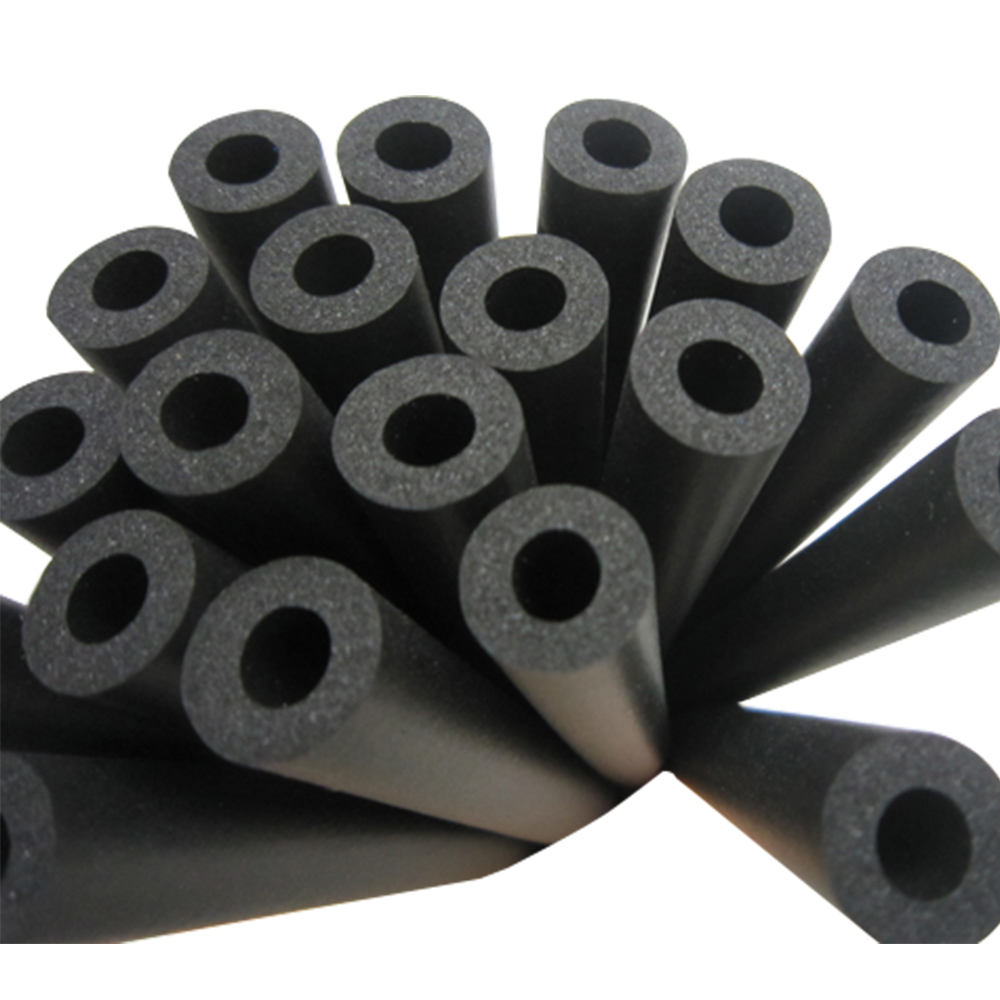

EPDM Sponge Tubing vs. Neoprene: Which One Performs Better in Harsh Environments? - INSULATION TUBING Manufacturer
Introduction: Why Material Choice Impacts Long-Term Reliability
In engineering and industrial manufacturing, selecting the wrong material—even something as small as a sponge tube—can compromise an entire system. From automotive gasketing to HVAC insulation, the environment where the tubing is installed determines not only its effectiveness but also its longevity.
Two of the most widely used materials for sponge tubing are EPDM (Ethylene Propylene Diene Monomer) and neoprene (polychloroprene). While they may appear similar in structure and flexibility, the truth is they differ significantly in performance under harsh environmental conditions. Based on years of manufacturing feedback, material testing, and international applications, we explore the comparative strengths and weaknesses of these materials.
Material Expertise: EPDM vs. Neoprene at a Glance
EPDM is widely regarded for its exceptional resistance to ozone, UV, and extreme temperature fluctuations. Neoprene, on the other hand, offers moderate weather resistance with superior oil and chemical resistance. When manufactured into sponge tubes, both materials take on a closed-cell structure that provides insulation and cushioning properties—but their field performance diverges dramatically.
| Property | EPDM Sponge Tube | Neoprene Sponge Tube |
|---|---|---|
| UV & Ozone Resistance | Excellent | Moderate |
| Weather Durability | Excellent | Moderate |
| Temperature Range | –60°C to +130°C | –40°C to +100°C |
| Oil & Chemical Resistance | Fair | Good |
| Compression Recovery | Strong | Average |
| Cost | Slightly Higher | Moderate |
Real-World Experience: What Customers Actually Encounter
An HVAC equipment manufacturer in Arizona reported that neoprene seals on rooftop condensers showed signs of cracking and deformation within 8–12 months. After switching to EPDM sponge tubing supplied by Forbest, their service intervals extended beyond two years with zero failures. The difference was especially noticeable during the summer months, when UV exposure and daily thermal cycling were most intense.
“It wasn’t about the price; it was about performance under real-world heat. The EPDM solution held up far better.”
— Miguel Herrera, Senior Maintenance Engineer, Phoenix Commercial HVAC Group
Authoritative Insights: Industry Data on Material Degradation
Extensive testing conducted by the Polymer Testing Institute of Europe in 2023 compared EPDM and neoprene under accelerated UV aging conditions. The findings revealed:
-
Neoprene lost 40% of its tensile strength after 700 hours of UV exposure
-
EPDM retained over 90% of its structural integrity even after 1,500 hours
“For sealing and gasketing applications involving weather exposure, EPDM is clearly the superior sponge elastomer.”
— Dr. Sabine Lohner, Senior Materials Analyst, PTIE Lab Report #2307-E
This matches our own lab testing results at Forbest, where EPDM sponge tubing maintained over 80% of compression recovery even after exposure to repeated heat-cold cycles and 1,000 hours of outdoor simulation.
Application Expertise: Use Cases That Favor EPDM or Neoprene
EPDM Sponge Tubing is Ideal for:
-
HVAC systems exposed to outdoor weather
-
Automotive door seals and engine bay insulation
-
Electrical enclosure gaskets in rooftop installations
-
Solar panel mounts or smart pole gaskets
Neoprene Sponge Tubing is Suitable for:
-
Indoor equipment near light oils or lubricants
-
General-purpose cushioning
-
Short-term installations or products with low environmental exposure
Forbest works closely with clients to evaluate these variables and specify the right material for long-term value. While we manufacture both types, over 80% of our international outdoor sealing orders now rely on EPDM rather than neoprene.
Trustworthiness Through Compliance and Global Standards
Forbest’s EPDM sponge tubes comply with:
-
RoHS and REACH environmental directives
-
UL 94 HF-1 flame classification (on request)
-
ISO 846 fungus resistance test standards
We also provide third-party testing documentation for industries such as:
-
HVAC (ASHRAE-compliant applications)
-
Automotive OEM (TS16949-compatible supply)
-
Cleanroom and electrical systems
This level of documentation, combined with customizable durometer, density, and profile formats, enhances both buyer confidence and product traceability.
Expert Quotation: Why Engineers Are Shifting to EPDM
“EPDM’s chemical backbone makes it resistant to ozone scission—a key factor in outdoor durability. It’s also thermally stable, meaning it won’t embrittle or degrade as fast as neoprene when temperatures swing widely.”
— Dr. Marcus Kim, Lead Polymer Engineer, Global Elastomeric Conference 2024, Seoul
Conclusion: A Reliable Choice Begins with the Right Material
Neoprene may still find relevance in controlled indoor applications or where oil resistance is crucial. However, when your system faces the challenges of UV, rain, ozone, or drastic temperature changes, EPDM clearly rises above.
Based on over a decade of client feedback, field performance, and third-party testing, EPDM sponge tubing should be your first choice for weather-exposed and high-reliability applications. At Forbest, we help engineers, OEMs, and project managers make the right call—not just based on price, but based on proven results.
Explore EPDM sponge tubing options from Forbest to secure your systems against environmental wear and failure.
